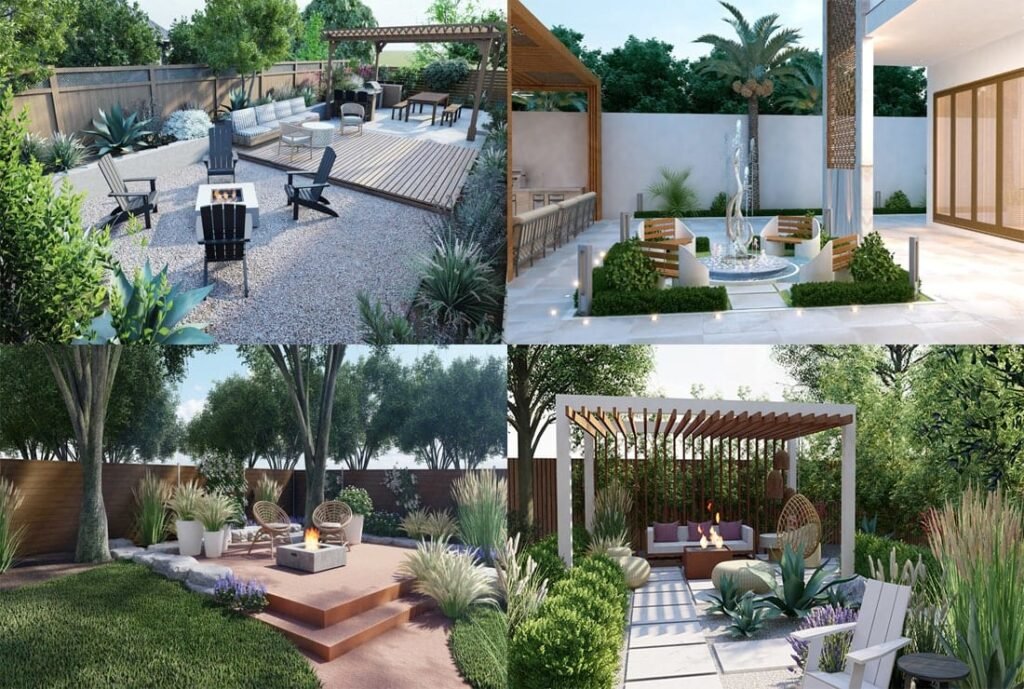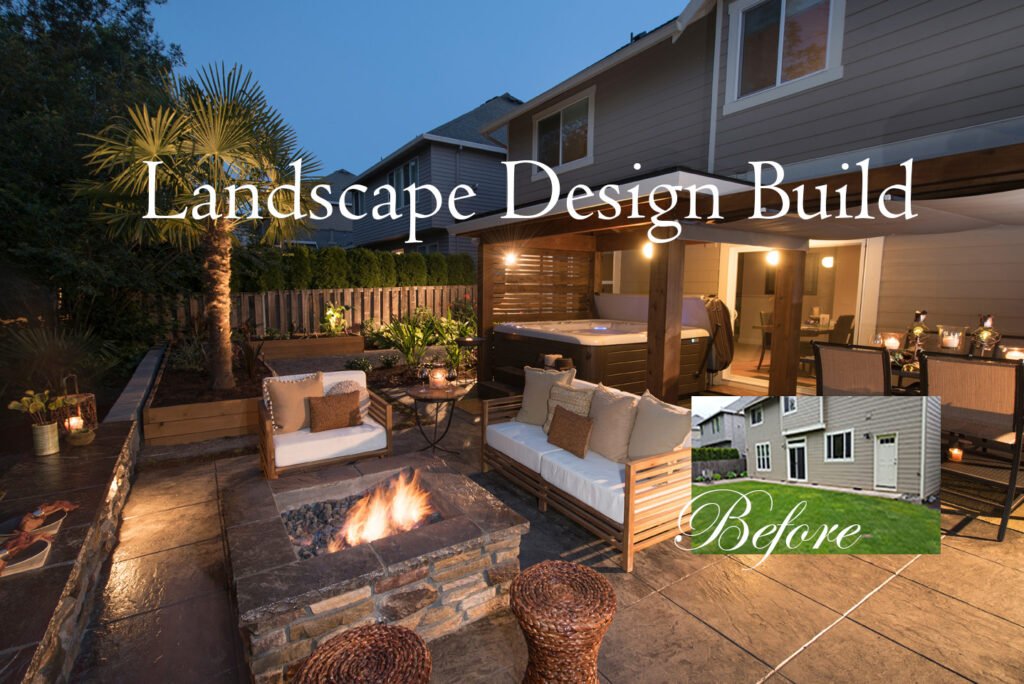Landscape Design and Build
Landscape design services involve the planning and creation of outdoor spaces to enhance their functionality, aesthetics, and overall appeal. It includes the conceptualization, layout, and selection of various elements such as plants, hardscapes, lighting, water features, and more.

Cutting and removing trees may be necessary before executing a landscape design and build for several reasons:
- Space and Layout: Trees may need to be removed to create space for new elements or to reconfigure the layout of the outdoor area according to the design plan.
- Sunlight and Shade: Trees can cast shadows that may impact the desired amount of sunlight or shade in certain areas. Removing or selectively pruning trees can help achieve the desired lighting conditions.
- Safety and Structural Integrity: If trees pose a safety risk due to their proximity to structures, power lines, or their overall health and stability, removal may be necessary to ensure the safety of the landscape and its users.
Different types of landscape designs include:
- Formal Design: This style emphasizes symmetry, geometric shapes, clean lines, and formal plantings. It often incorporates elements like topiaries, hedges, and well-defined pathways.
- Informal Design: This style focuses on a more relaxed and naturalistic approach, with curvilinear lines, organic shapes, and a mix of plant varieties. It aims to create a more casual and inviting atmosphere.
- Contemporary Design: This style embraces modern and minimalist elements, often featuring clean lines, bold shapes, and a limited color palette. It may incorporate innovative materials, sleek outdoor furniture, and unique plant selections.


Key concerns in a landscape design and build include:
- Functionality: Ensuring that the outdoor space is designed to meet the intended purposes, whether it’s for entertaining, relaxation, recreation, or a combination.
- Aesthetics: Creating a visually appealing landscape that complements the surrounding architecture and reflects the desired style or theme.
- Sustainability: Incorporating eco-friendly practices, such as water conservation, native plantings, and efficient irrigation systems.
- Budget: Balancing design aspirations with the available budget, selecting materials and features that align with the financial constraints.
- Maintenance: Considering the long-term maintenance requirements of the design, including plant care, irrigation, and general upkeep.
It is important to consult with a professional landscape designer or landscape architect to address these concerns and ensure a successful landscape design and build project.
